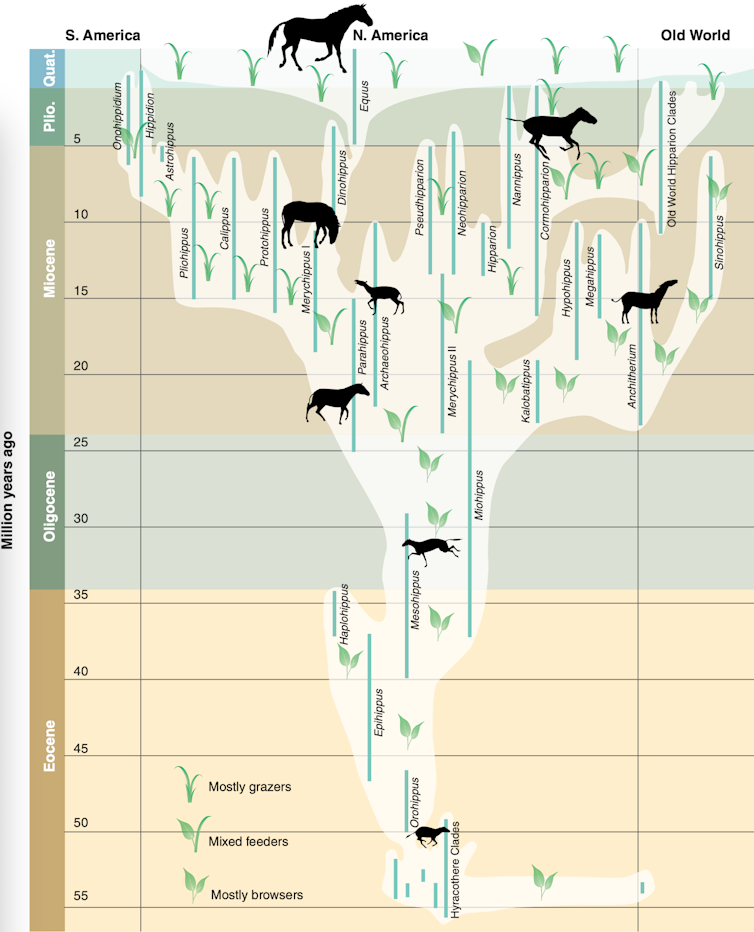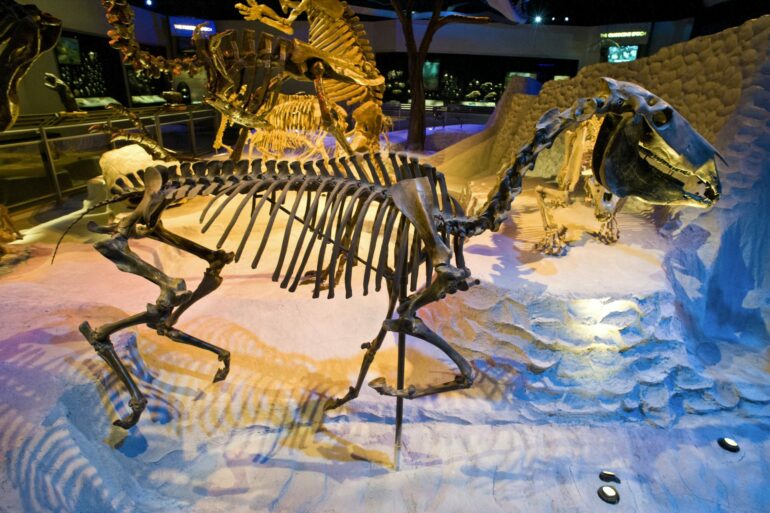Many people assume that horses first came to the Americas when Spanish explorers brought them here about 500 years ago. In fact, recent research has confirmed a European origin for horses associated with humans in the American Southwest and Great Plains.
But those weren’t the first horses in North America. The family Equidae, which includes domesticated varieties of horses and donkeys along with zebras and their kin, is actually native to the Americas. The fossil record reveals horse origins here more than 50 million years ago, as well as their extinction throughout the Americas during the last Ice Age about 10,000 years ago.

Phylogeny, geographic distribution, diet and body sizes of the family Equidae over the past 55 million years.
From ‘Fossil horses–evidence for evolution.’ Science. MacFadden, 2005. Reprinted with permission from AAAS.
We are paleontologists who focus our research on various types of fossils, including ancient horses. Our most recent work used computer statistics to analyze gaps in the fossil record to infer more about which horse species really did and didn’t live in one ancient habitat in Florida.
Horses evolved as ecosystems changed
People have collected fossil horses throughout North America for centuries. Because horse fossils are abundant and widespread across the continent, scientists often point to the long span of the horse family as evidence of long-term evolutionary change.
Paleontologists like us, who study extinct mammals, almost never find complete skeletons. Instead, we focus on durable fossil teeth, which help us understand ancient diets, and fossil limbs, which help clarify how these animals moved.
Horses are eating machines. In the wild today, they primarily feed on grasses that don’t provide much nutrition, and thus they need to consume large quantities to survive. The large teeth of modern horses and their ancestors are adapted primarily for grazing on gritty grasses. They replaced smaller teeth of more primitive horses adapted to browsing on soft leafy vegetation.
We know what horses ate millions of years ago by studying distinctive microscopic scratches, pits and other wear patterns on their teeth that were created as the ancient horses chewed plant foods. And analyses of carbon preserved in fossil teeth show that coexisting horse species ate different plants; some browsed on leaves from bushes and trees, some grazed on grasses, and yet others were mixed feeders.
The change in tooth shape tracks the change in dominant vegetation types in North America, from tropical forests that then gave way to the great expansion of open prairie grasslands. As the climate and flora changed over millions of years, horses shifted from being largely forest-dwelling browsers to largely open-country grazers. Their teeth and feeding patterns adapted to the environment.
Another adaptation is visible on horses’ feet. Modern horses have one hoofed toe on each…



